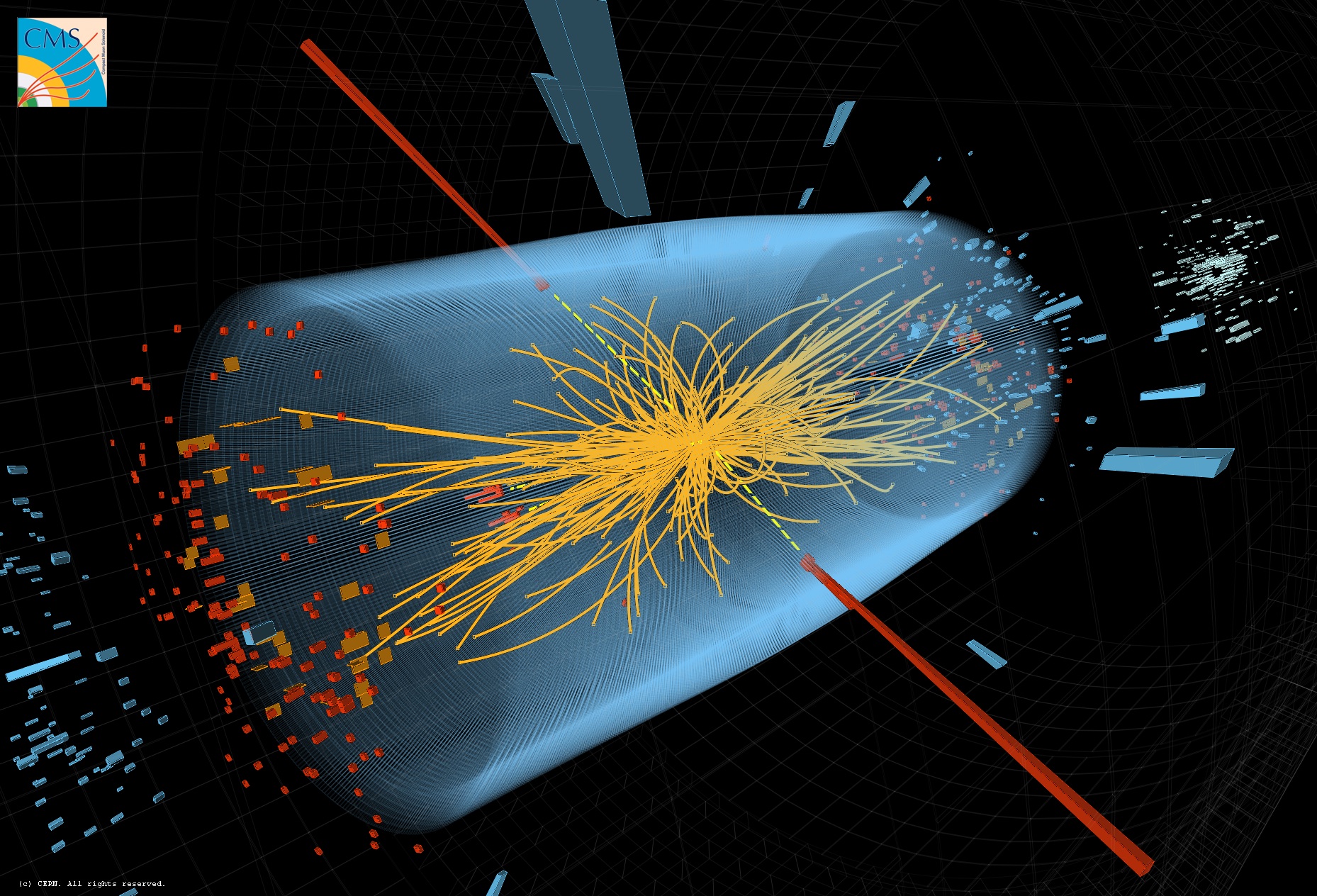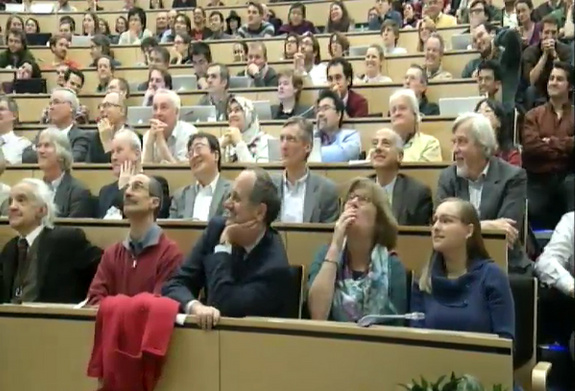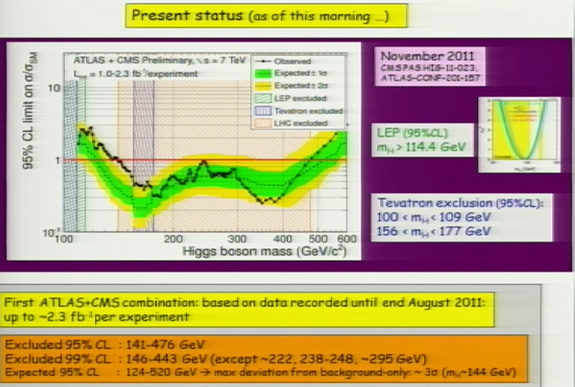Long-Sought 'God Particle' Cornered, Scientists Say

Physicists are closer than ever to hunting down the elusive Higgs boson particle, the missing piece of the governing theory of the universe's tiniest building blocks.
Scientists at the world's largest particle accelerator, the Large Hadron Collider at the European Organization for Nuclear Research (CERN) in Geneva, Switzerland, announced today (Dec. 13) that they'd narrowed down the list of possible hiding spots for the Higgs, (also called the God particle) and even see some indications that they're hot on its trail.
"I think we are getting very close," said Vivek Sharma, a physicist at the University of California, San Diego, and the leader of the Higgs search at LHC's CMS experiment. "We may be getting the first tantalizing hints, but it's a whiff, it's a smell, it's not quite the whole thing."
Today's announcement was highly anticipated by both the physics community and the public, with speculation running rampant in the days leading up to it that the elusive particle may have finally been found. Though the news is not the final answer some were hoping for, the progress is a significant, exciting step, physicists say. [Top 5 Implications of Finding the Higgs Boson]
"It's something really extraordinary and I think we can be all proud of this," said CERN physicist Fabiola Gianotti, spokesperson for the LHC's ATLAS experiment, during a public seminar announcing the results today.
Experts outside the LHC collaborations agreed.
"These are really tough experiments, and it's just really impressive what they're doing," Harvard University theoretical physicist Lisa Randall told LiveScience.
Breaking space news, the latest updates on rocket launches, skywatching events and more!
Origin of mass
The Higgs boson is thought to be tied to a field (the Higgs field) that is responsible for giving all other particles their mass. Ironically, physicists don't have a specific prediction for the mass of the Higgs boson itself, so they must search a wide range of possible masses for signs of the particle.
Based on data collected at LHC's CMS and ATLAS experiments, researchers said they are now able to narrow down the Higgs' mass to a small range, and exclude a wide swath of possibilities.
"With the data from this year we've ruled out a lot of masses, and now we're just left with this tiny window, in this region that is probably the most interesting," said Jonas Strandberg, a researcher at CERN working on the ATLAS experiment.
The researchers have now cornered the Higgs mass in the range between 114.4 and 131 gigaelectronvolts (GeV).For comparison, a proton weighs 1 GeV. Outside that range, the scientists are more than 95 percent confident that the Higgs cannot exist.
Within that range, the ATLAS findings show some indications of a possible signal from the Higgs boson at 126 GeV, though the data are not strong enough for scientists to claim a finding with the level of confidence they require for a true discovery.
"Based on the predicted size of the signal, the experiments may have their first glimpse of a positive signal," University of Chicago physicist Jim Pilcher wrote in an email to LiveScience. "It is especially important to compare the results of two independent experiments to help reduce statistical fluctuations and experimental biases."
But it shouldn't be much longer before scientists can be sure if the Higgs exists, and if so, how much mass it has.
"We know we must be getting close," Strandberg told LiveScience. "All we need is a little bit more data. I think the data we take in 2012 should be able to really give a definitive answer if the Higgs boson exists."
Underground explosions
The Large Hadron Collider is a 17-mile (27-kilometer) loop buried underneath France and Switzerland, run by CERN, based in Geneva.
Inside this loop, protons traveling near the speed of light collide head-on, and release huge amounts of energy in powerful explosions.
This energy then coalesces into new particles, some of which are exotic, hard-to-find species like the Higgs. The Higgs quickly decays into other particle products, which are then sensed by the detectors inside ATLAS and CMS. [6 Exotic Particles Explained]
The new results are based on data accumulated over 500 trillion proton-proton collisions inside the LHC.
Big payoff
The Higgs boson and its related Higgs field were predicted in 1964 by physicist Peter Higgs and his colleagues. Though the Higgs mechanism is the best explanation for why particles have mass, it can't be trusted until its major prediction — the Higgs boson — is found. [Infographic: The Higgs Boson]
"It would be a major discovery, absolutely," said Randall, who is the author of a recent book covering the Higgs and other particle mysteries called "Knocking on Heaven's Door: How Physics and Scientific Thinking Illuminate the Universe and the Modern World" (Ecco, 2011). "We've known about the Higgs mechanism for years, but we don't know if it's right."
The discovery of the Higgs would offer final credence to the idea and its originators.
"If it is found there are several people who are going to get a Nobel prize," said Vivek Sharma, a physicist at the University of California, San Diego, and the leader of the Higgs search at LHC's CMS experiment.
This article was provided by LiveScience.com, a sister site of SPACE.com. You can follow LiveScience senior writer Clara Moskowitz on Twitter @ClaraMoskowitz. Follow LiveScience for the latest in science news and discoveries on Twitter @livescience and on Facebook.

Clara Moskowitz is a science and space writer who joined the Space.com team in 2008 and served as Assistant Managing Editor from 2011 to 2013. Clara has a bachelor's degree in astronomy and physics from Wesleyan University, and a graduate certificate in science writing from the University of California, Santa Cruz. She covers everything from astronomy to human spaceflight and once aced a NASTAR suborbital spaceflight training program for space missions. Clara is currently Associate Editor of Scientific American. To see her latest project is, follow Clara on Twitter.



